Cadences, Guest Lesson by DeepRoots |
|
|
|
|
|
| May 26 2008, 04:30 PM |
|
Cadences Foreword by Andrew This is the first in a new breed of theory lesson for this board. Sadly, owing to other GMC commitments, I have been too busy for a while to write any new theory lessons. DeepRoots has very kindly agreed to help out a little with this. This lesson was entirely written by him, and fits neatly into the published lesson plan, and I am proud to add it to my theory board! In future we hope to bring you more collaborative theory lessons and keep the theory rolling in! So, over to DeepRoots ... -- Cadences can be seen as 'musical punctuation'. A cadence is a formula that signifies the end of a musical phrase, like punctuation in written language. For our purposes a cadence may be regarded as a harmonic formula, usually consisting of a pair of chords, that also often has the important function of defining the key of the music. Cadences give phrases a distinct finish, which can, for example, show the listener whether the piece is to be continued or concluded. There are four basic kinds of cadence: Perfect Cadence (or authentic or standard cadence): V - I Resolution consisting of the chords V - I. The strongest and most used cadence in music makes for the most decisive resolution at the end of any piece. This cadence sounds "finished", it is nearly always used at the end of a piece. Imperfect Cadence (or half or open cadence): I - V Resolution involving a movement to the dominant is the next most popular cadence, whether preceded by ii, IV, or I, or any other chord. It leaves the tonality unfinished and prepares the way for another section of music. Plagal Cadence: IV - I Resolution consisting of the chords IV - I. Also informally known as the "Amen" cadence as it is used quite often at the end of a hymn for instance. It is somewhat rare compared to other cadences. Interrupted Cadence: V - vi Movement from chord V to any chord except the I chord (typically vi, which is the relative minor key chord in major key). Again, an important cadence for giving music a thirst for continuation, it really makes you want to hear resolution! Cadences in action So that you can test out these cadences, we'll use the key of C major to illustrate their sound and purpose. First, strum out a C major chord, this will get your ear thinking in terms of C major before we start looking at the cadences it is involved with. 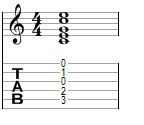 Perfect cadence: V- I In the key of C major, this would give us the progression G – C 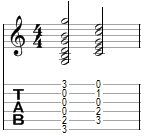 Pay attention to how this sounds "finished". The C major chord resolves the piece. In a rock context, power chords may be used. It is typical for rock guitarists playing in the key of E minor to end the song with an E5 chord. Imperfect cadences: I - V, ii - V, IV - V These imperfect cadences give us the following progressions, respectively. C – G. 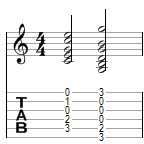 Dm - G 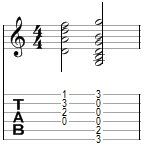 F - G 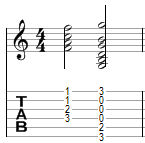 Though it sounds unfinished and would often lead into another section of music, this is sometimes used to end a song, which can give the listener an unexpected "surprise". Plagal Cadence: IV - I Again, in C major, this would give us the progression F – C.  What to say? Sounds very hymn-like to me. Don't feel obliged to use this in a rock context Interrupted Cadence: V – vi In C major, this would be G – Am 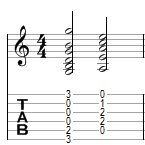 Though it doesn't resolve like the perfect cadence and does leave you expecting resolution, I do like the sound of this cadence for ending a song. It could be a sorrowful way of ending a happy and otherwise up-beat song. Okay, so now you know a little about cadences. Try to apply some of these cadences to your own playing and also try to listen out and spot different cadences in music that you're listening to. Remember the all important sound of the perfect cadence; recognising its characteristic sound will help you find the key of a song! -------------------- Check out my Instructor profile
Live long and prosper ... My Stuff: Electric Guitars : Ibanez Jem7v, Line6 Variax 700, Fender Plus Strat with 57/62 Pickups, Line6 Variax 705 Bass Acoustic Guitars : Taylor 816ce, Martin D-15, Line6 Variax Acoustic 300 Nylon Effects : Line6 Helix, Keeley Modded Boss DS1, Keeley Modded Boss BD2, Keeley 4 knob compressor, Keeley OxBlood Amps : Epiphone Valve Jnr & Head, Cockburn A.C.1, Cockburn A.C.2, Blackstar Club 50 Head & 4x12 Cab |
|
|
||
Posts in this topic
 Andrew Cockburn Cadences May 26 2008, 04:30 PM
Andrew Cockburn Cadences May 26 2008, 04:30 PM
 Muris Varajic Ahh,it just brought me back to good old days
when... May 26 2008, 04:46 PM
Muris Varajic Ahh,it just brought me back to good old days
when... May 26 2008, 04:46 PM
 Rolls Cool topic....glad to see some more theory lessons May 26 2008, 06:20 PM
Rolls Cool topic....glad to see some more theory lessons May 26 2008, 06:20 PM
 Kristofer Dahl Wow Deeproots (and Andrew) this is a very needed t... May 26 2008, 06:40 PM
Kristofer Dahl Wow Deeproots (and Andrew) this is a very needed t... May 26 2008, 06:40 PM
 Ivan Milenkovic Very nice addition to theory lessons! Great jo... May 26 2008, 07:17 PM
Ivan Milenkovic Very nice addition to theory lessons! Great jo... May 26 2008, 07:17 PM
 skennington One again, thanks guys. I have added this to my th... May 26 2008, 07:24 PM
skennington One again, thanks guys. I have added this to my th... May 26 2008, 07:24 PM
 DeepRoots Thanks for your kind words, guys. May 26 2008, 08:47 PM
DeepRoots Thanks for your kind words, guys. May 26 2008, 08:47 PM
 Kristofer Dahl I have studied this one a little more and I must s... May 31 2008, 08:51 PM
Kristofer Dahl I have studied this one a little more and I must s... May 31 2008, 08:51 PM

 Andrew Cockburn Thanks for the suggestions Kris, we will see what ... Jun 3 2008, 01:45 PM
Andrew Cockburn Thanks for the suggestions Kris, we will see what ... Jun 3 2008, 01:45 PM

 fkalich QUOTE (Andrew Cockburn @ Jun 3 2008, 07:4... Jun 5 2008, 05:47 AM
fkalich QUOTE (Andrew Cockburn @ Jun 3 2008, 07:4... Jun 5 2008, 05:47 AM

 Andrew Cockburn QUOTE (fkalich @ Jun 5 2008, 12:47 AM) Go... Jun 5 2008, 12:42 PM
Andrew Cockburn QUOTE (fkalich @ Jun 5 2008, 12:47 AM) Go... Jun 5 2008, 12:42 PM
nnn
nnn
nnn

 Col Roberts Well done guys. The third example of an imperfect... Jun 4 2008, 07:43 AM
Col Roberts Well done guys. The third example of an imperfect... Jun 4 2008, 07:43 AM
 Col Roberts QUOTE (Col Roberts @ Jun 4 2008, 04:43 PM... Jun 7 2008, 10:02 AM
Col Roberts QUOTE (Col Roberts @ Jun 4 2008, 04:43 PM... Jun 7 2008, 10:02 AM
 Andrew Cockburn QUOTE (Col Roberts @ Jun 7 2008, 05:02 AM... Jun 7 2008, 01:30 PM
Andrew Cockburn QUOTE (Col Roberts @ Jun 7 2008, 05:02 AM... Jun 7 2008, 01:30 PM
nnn
nnn
nnn
nnn
1 User(s) are reading this topic (1 Guests and 0 Anonymous Users)
0 Members:

















